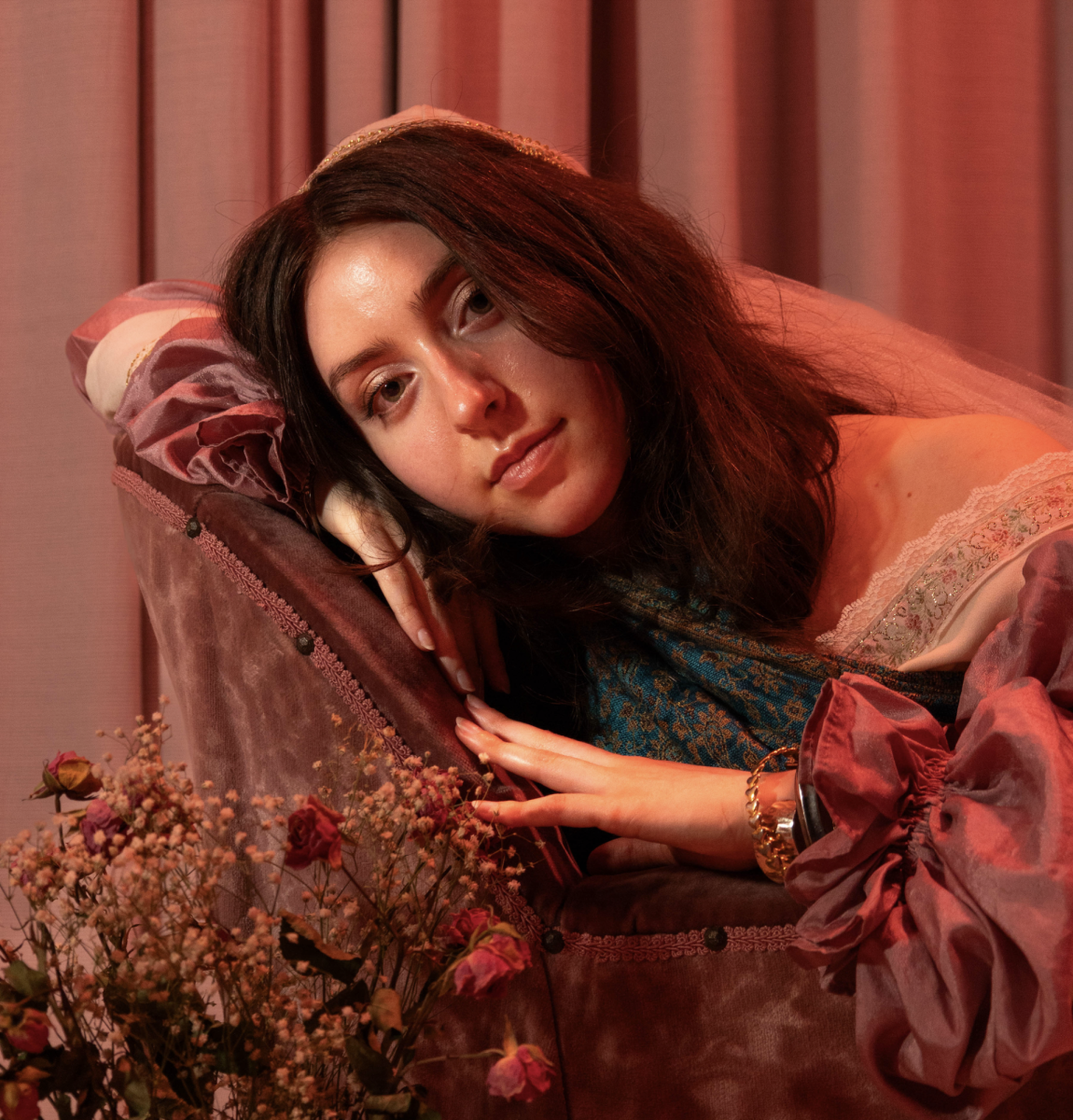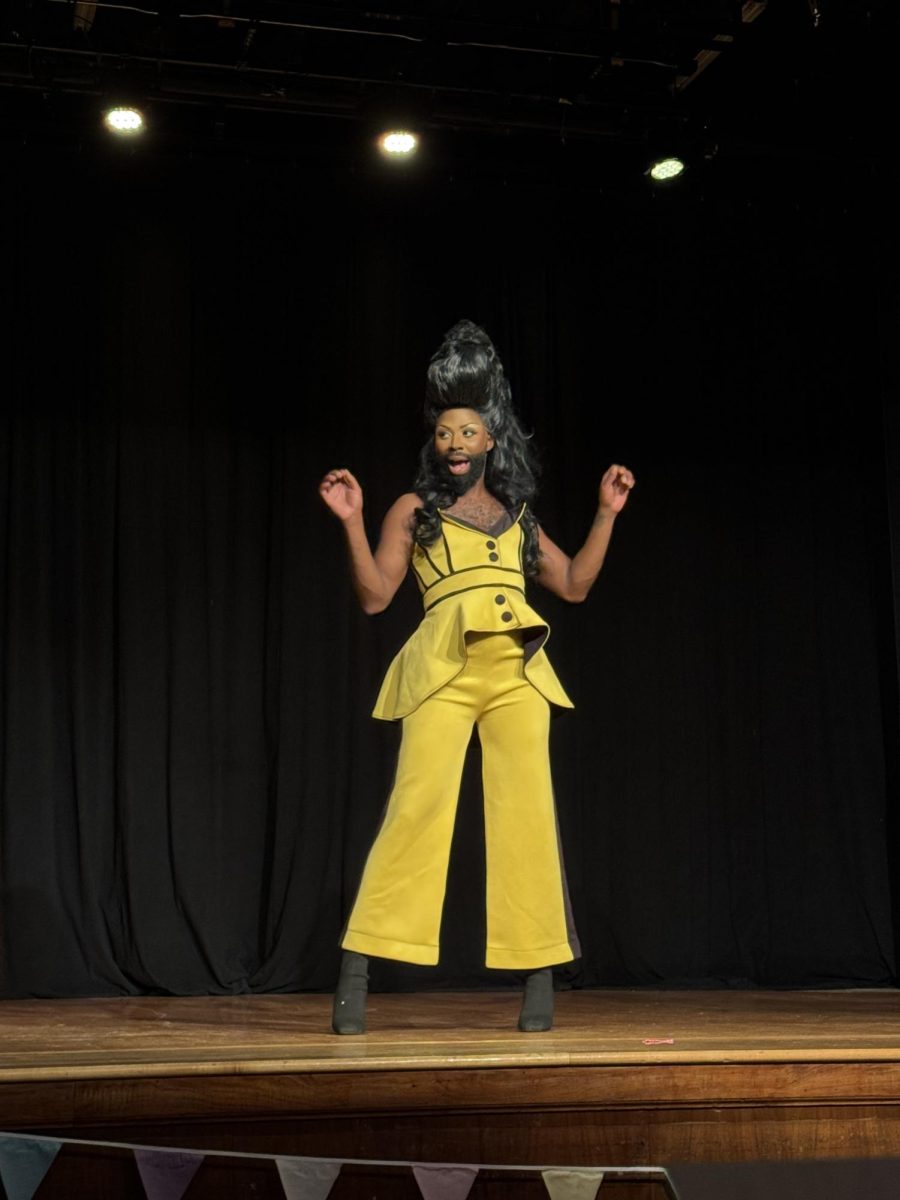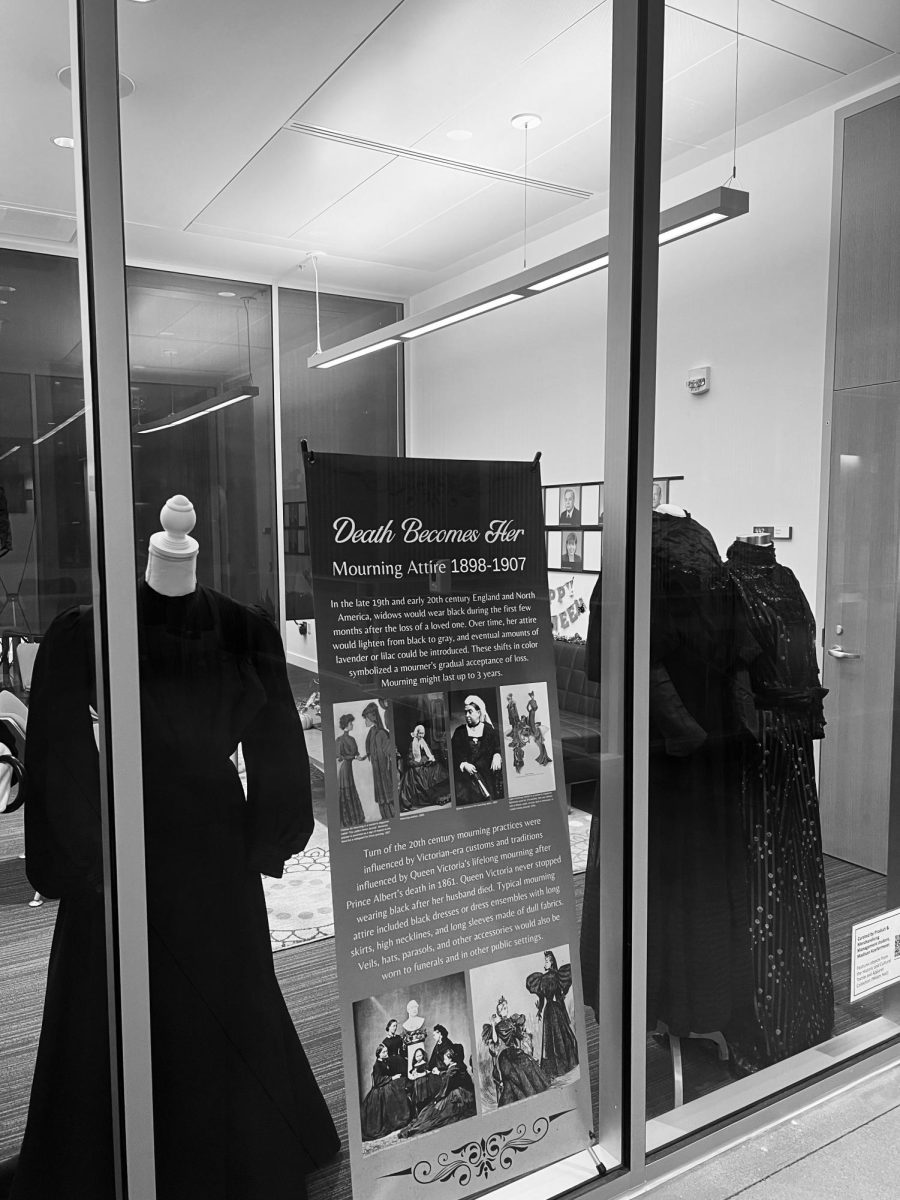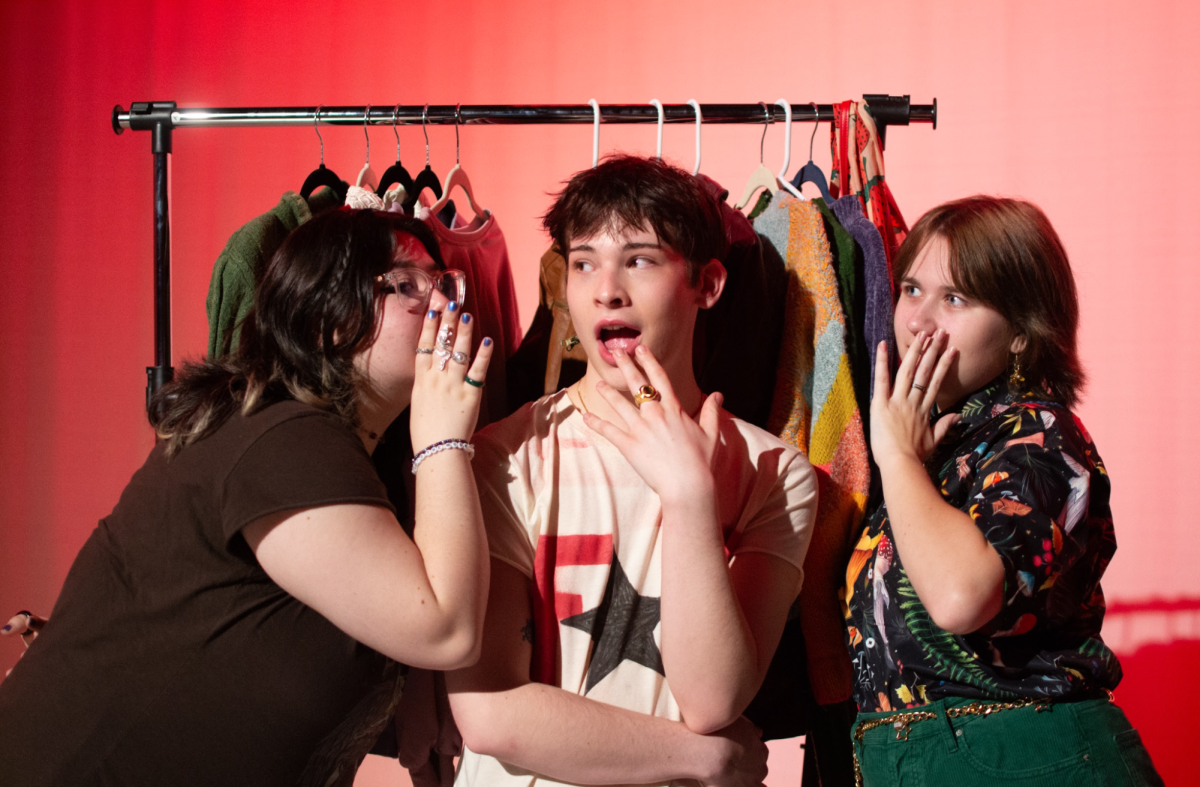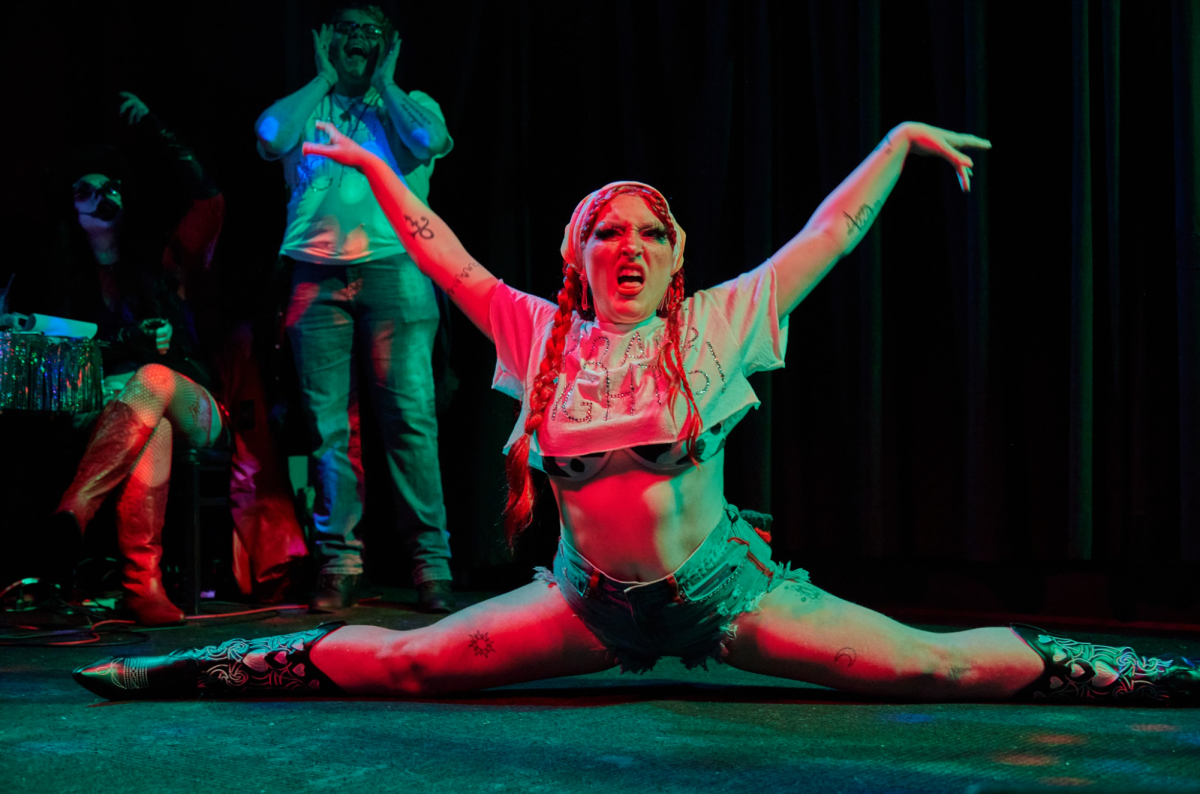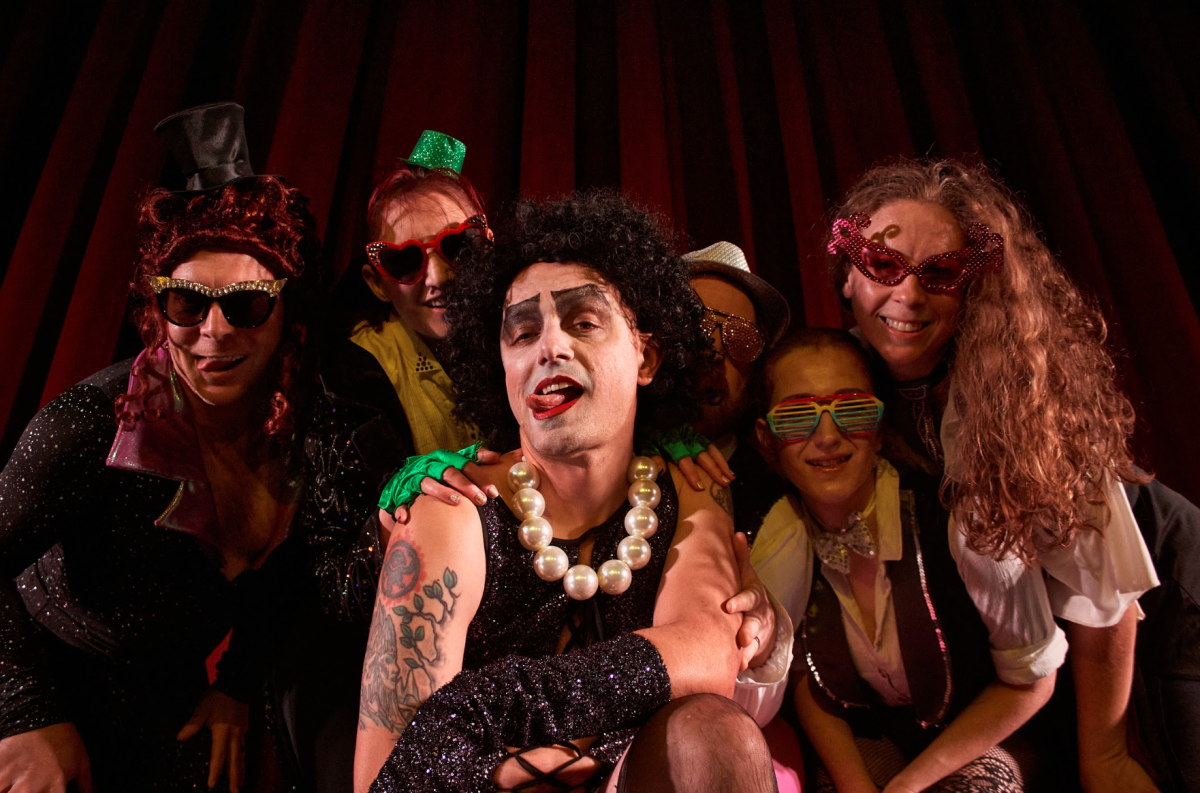In a world buried under piles of fast fashion and mindless consumption, upcycling emerges as a creative antidote, turning everyday cast-offs into imaginative new beginnings. Johanna Hunt, a fourth-year biohealth sciences major, embodies this approach, investing wholeheartedly in overlooked materials and letting inspiration guide her every stitch.
“I don’t see trash — I see potential,” Jo said. “When I see something old or broken, I think about what it could be.”
Jo’s passion for sewing started with her grandmother, who taught her how to transform spare fabric into functional art. What began with simple pencil pouches eventually grew into her brand, Hannah Jo’s.
Unlike traditional designers, Jo works without sketches, mood boards or carefully drafted patterns. Her process begins the moment she looks at a piece of fabric — whether it’s a thrifted T-shirt, a vintage coat or a textured scrap, she lets the material dictate the design.
“When I’m in the right headspace, I’ll open my treasure chest of scraps, and everything just glows with possibility,” she said.
A Trader Joe’s bag could be transformed into playful shorts, an old cardigan repurposed into a halter top, or even a Pop-Tart wrapper reimagined as a bikini.
“If I have a vision, I’ll try to make it, but it changes so much along the way — it’s never set in stone,” she said. “Sometimes I’ll piece things together, try it on, and realize I want bigger sleeves or a different neckline. I love those spontaneous changes.”
Jo gravitates toward bold prints, jersey fabrics, sparkly textures and anything that catches her eye. Imperfections aren’t obstacles — they spark creativity. A stain might inspire embroidery, while a torn seam could lead to a contrasting fabric patch.
“Nothing really goes to waste if you can imagine a new purpose for it,” Jo said.
At the core of her designs is a commitment to zero waste. She saves even the tiniest scraps, repurposing them into patches, pillow stuffing or accessories.
Sourcing secondhand allows Jo to avoid contributing to fashion’s throwaway culture.“I’m looking and trying to make pieces that’ll last a lifetime,” Jo said. Her work blends fun, nostalgia and sustainability, proving that style doesn’t have to come at the planet’s expense.
“I like to mix bold colors and nostalgic pieces — it’s all about combining the unexpected in a way that just feels right,” Hunt said. “It’s not just about being sustainable. It’s about creating something unique that tells a story,” she explained.
Her dedication to repurposing every scrap gives each garment a one-of-a-kind character. “The best part is taking something nobody wants and turning it into a piece I’m proud to wear,” Jo said. “I want people to see that old things can still be beautiful — you don’t need to buy something new to have something amazing.”
She encourages others to rethink fashion — not as something disposable, but as something transformable. Even those with no sewing experience can start small, by altering or mending their clothes.
“To me, upcycling is like a puzzle — figuring out how all these random textures and prints can fit together,” Jo said. “Every piece of fabric I use has a story before it even touches my hands. I’m just adding a new chapter.”
Through her designs, Jo proves that some of fashion’s best stories emerge from the most unexpected materials. Sometimes all it takes is an open mind, a deep dive into that treasure chest and the creativity to see beauty where others see waste.
“Once you do it once, you see the possibilities everywhere,” Jo said.
For more inspiration and to follow her fashion journey, check out @hannahjos_clothes on Instagram, where every piece proves that humble beginnings can lead to runway-worthy transformations.



